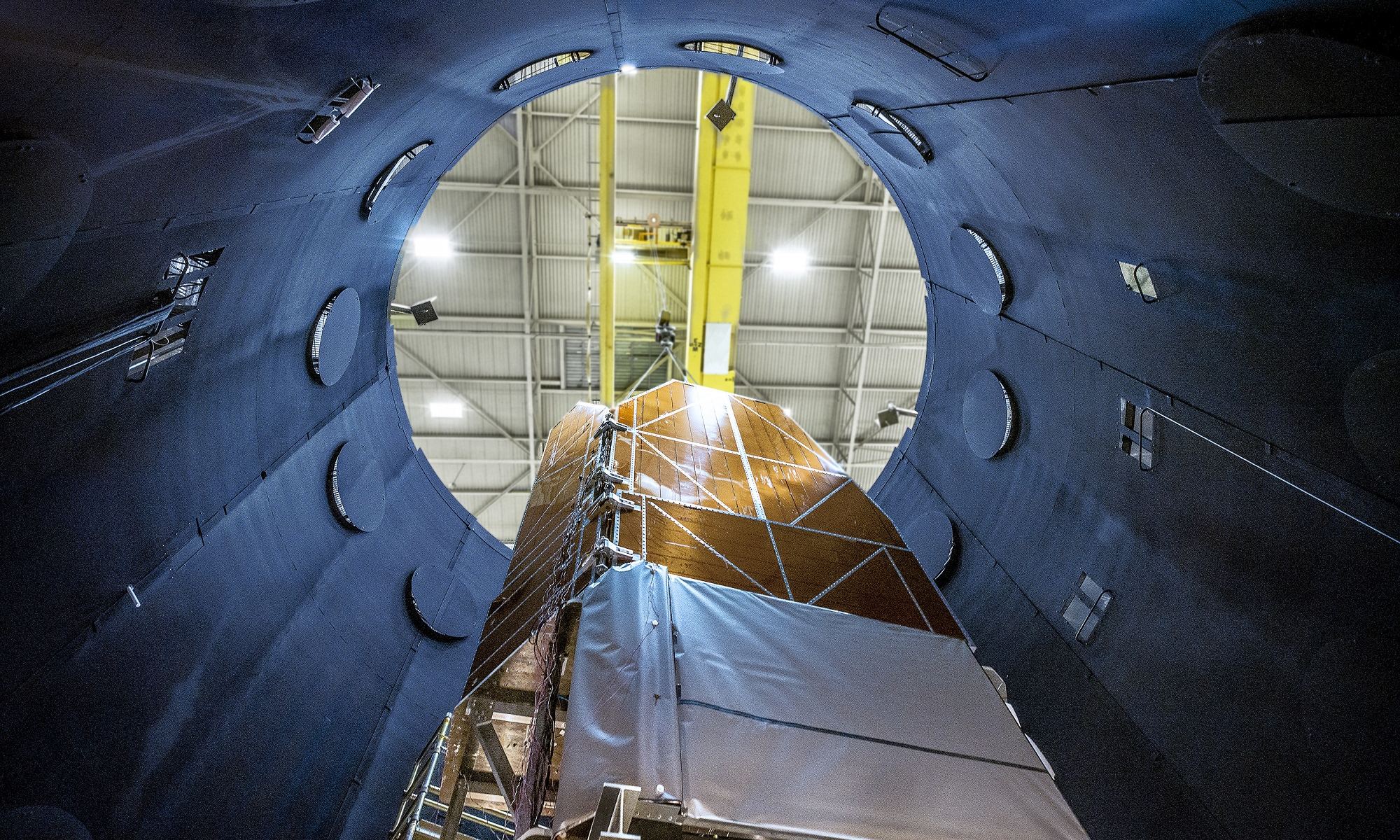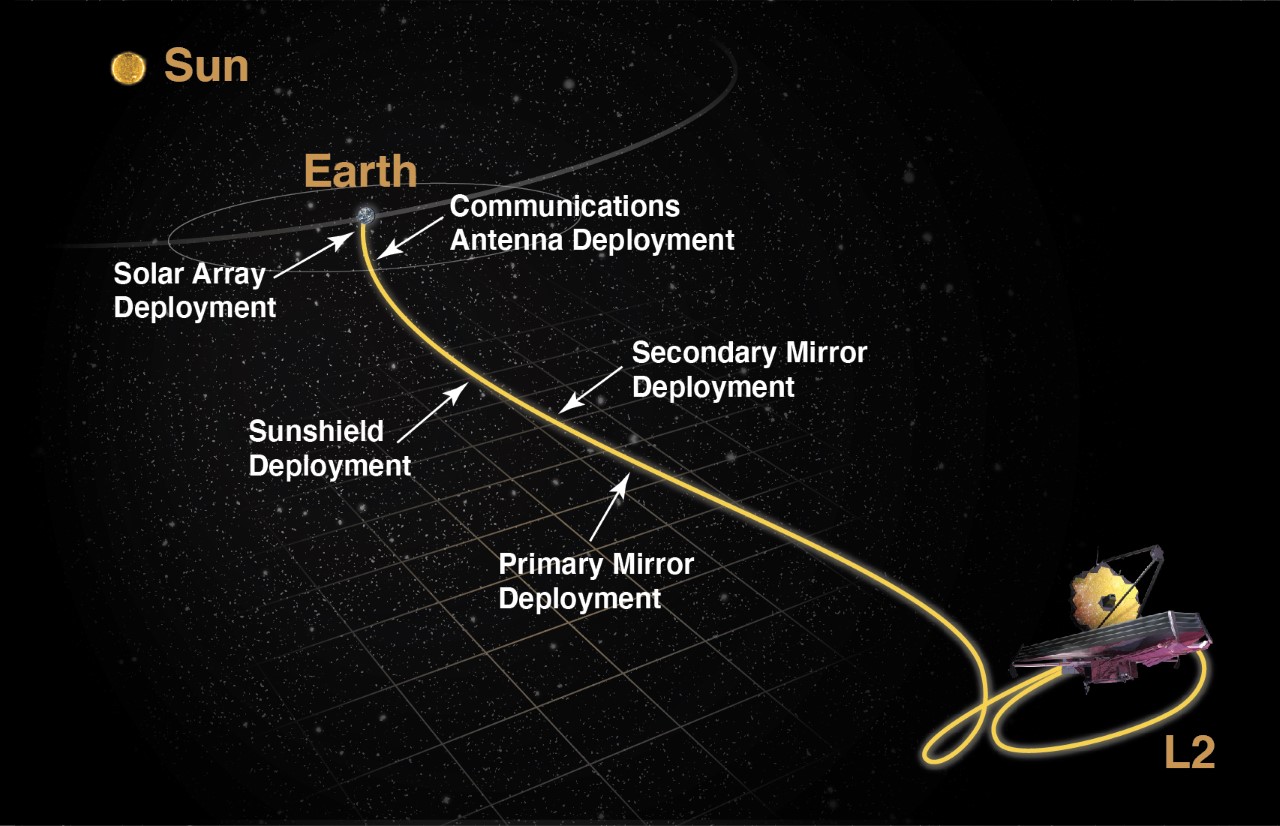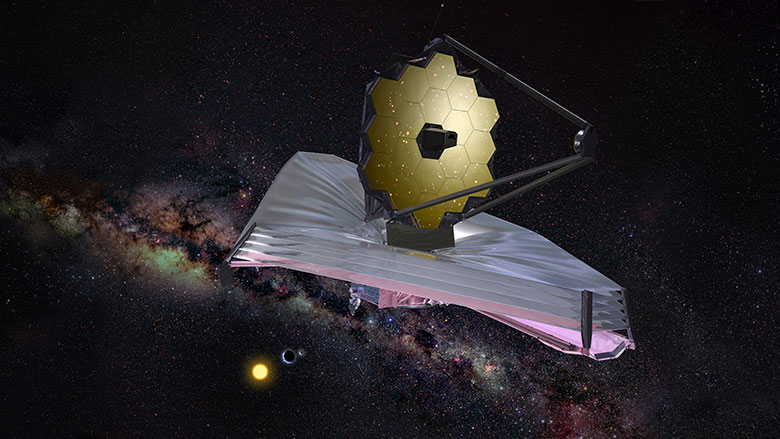Recently, astronomers have been finding protoplanetary discs around certain stars. Their discovery has helped kick off a new work in planetary formation theory. But planets aren’t the objects that form from discs of material in space. Moons do too. Now, scientists led by Dr. Tomas Stolker of Leiden University and his team have delved deeper into the characteristics of a “protolunar” disc surrounding a “super Jupiter” exoplanet about 500 light-years away.
Continue reading “Astronomers see a Moon-Forming Disk Around a Super-Jupiter”Webb has Arrived Safely at the Launch Site

Whew! A major milestone was achieved today in the James Webb Space Telescope’s journey towards launch. After the telescope successfully arrived in French Guiana yesterday following a secretive 16-day ocean journey (with apparently no pirates in sight), today the telescope took a short road trip over land to the ESA’s spaceport in Kourou. JWST is now at the payload processing facility, where staff will start the process of getting the telescope into the Ariane 5 rocket fairing.
Launch is currently scheduled for December 18, 2021 … T-66 days and counting!
Continue reading “Webb has Arrived Safely at the Launch Site”James Webb’s 30 Days of Terror
It’s been a long and winding road getting the James Webb Space Telescope from concept to reality. And finally, after decades of planning, work, delays, and cost overruns, the next generation of space telescopes is finally ready to launch. But even now, as the telescope might be secretly traveling by cargo ship to the European Space Agency (ESA) launch site in French Guiana, everyone involved with the JWST project knows a successful launch isn’t the final victory.
In reality, post launch is when the real nail-biting begins. While the Mars rover teams undergo “Seven Minutes of Terror” to land their spacecraft on the Red Planet, the JWST teams will have more than 30 days of excruciating, slow-motion terror as the telescope embarks on its month-long-day, 1.5-million-kilometer (million-mile) journey out to the second Lagrange point (L2).
Continue reading “James Webb’s 30 Days of Terror”Nancy Grace Roman Just Passed a Critical Design Review

By 2027, the Nancy Grace Roman Space Telescope – or Roman Space Telescope (RST), for short – will take to space and build on the legacy of the venerable Hubble Space Telescope (HST). Combing a large primary mirror, a camera as sensitive as its predecessors, and next-generation surveying capabilities, Roman will have the power of “One-Hundred Hubbles.” It’s little wonder then why the telescope is named after Dr. Roman (1925 – 2018), NASA’s first Chief Astronomer and the “Mother of Hubble.”
As part of its journey towards realization, this next-generation space telescope recently passed a crucial milestone. This would be the all-important Mission Critical Design Review (CDR), signaling that all design and developmental engineering work is complete. With this milestone reached, the next-generation space telescope is now ready to move from the conceptual stage into the fabrication and assembly phase.
Continue reading “Nancy Grace Roman Just Passed a Critical Design Review”Cosmic Dawn Holds the Answers to Many of Astronomy’s Greatest Questions

Thanks to the most advanced telescopes, astronomers today can see what objects looked like 13 billion years ago, roughly 800 million years after the Big Bang. Unfortunately, they are still unable to pierce the veil of the cosmic Dark Ages, a period that lasted from 370,000 to 1 billion years after the Big Bang, where the Universe was shrowded with light-obscuring neutral hydrogen. Because of this, our telescopes cannot see when the first stars and galaxies formed – ca., 100 to 500 million years after the Big Bang.
This period is known as the Cosmic Dawn and represents the “final frontier” of cosmological surveys to astronomers. This November, NASA’s next-generation James Webb Space Telescope (JWST) will finally launch to space. Thanks to its sensitivity and advanced infrared optics, Webb will be the first observatory capable of witnessing the birth of galaxies. According to a new study from the Université de Genève, Switzerland, the ability to see the Cosmic Dawn will provide answers to today’s greatest cosmological mysteries.
Continue reading “Cosmic Dawn Holds the Answers to Many of Astronomy’s Greatest Questions”Pencil December 18th (tentatively) into your calendar. That’s when James Webb probably launches

You may have heard this one before, but encouraging news comes from NASA, ESA, and Arianespace today: they are now targeting December 18, 2021 as the new launch date for the oft-delayed James Webb Space Telescope (JWST).
Continue reading “Pencil December 18th (tentatively) into your calendar. That’s when James Webb probably launches”Webb’s Testing is Complete. Now it Begins the Journey to the Launch Site.

Finally, it’s starting to get real for the James Webb Space Telescope. Engineers are now preparing the long-awaited landmark telescope for transport to its launch site at Europe’s Spaceport in French Guiana.
Continue reading “Webb’s Testing is Complete. Now it Begins the Journey to the Launch Site.”James Webb’s Upper Stage is off to the Launch Site
In November (or early December) of this year, after many excruciating delays, NASA’s James Webb Space Telescope (JWST) will finally launch to space. As the most advanced and complex observatory ever deployed, the James Webb will use its advanced suite of instruments to observe stars, exoplanets, and galaxies in the near and mid-infrared spectrum. In the process, it will address some of the most enduring mysteries about the nature of the Universe.
When the time comes, the James Webb will fly aboard an Ariane 5 rocket from the European Space Agency (ESA) launch facility near the town of Korou, French Guayana. Overnight on August 17th, 2021, the upper stage of that Ariane 5 began making its way in its cargo container from the ArianeGroup facility in Bremen, Germany, to Neustadt port, where it will board a ship bound for the ESA spaceport in French Guiana.
Continue reading “James Webb’s Upper Stage is off to the Launch Site”A New Technique for “Seeing” Exoplanet Surfaces Based on the Content of their Atmospheres

In November of 2021, the James Webb Space Telescope (JWST) will make its long-awaited journey to space. This next-generation observatory will observe the cosmos using its advanced infrared suite and reveal many never-before-seen things. By 2024, it will be joined the Nancy Grace Roman Space Telescope (RST), the successor to the Hubble mission that will have 100 times Hubble’s field of view and faster observing time.
These instruments will make huge contributions to many fields of research, not the least of which is the discovery and characterization of extrasolar planets. But even with their advanced optics and capabilities, these missions will not be able to examine the surfaces of exoplanets in any detail. However, a team of the UC Santa Cruz (UCSC) and the Space Science Institute (SSI) have developed the next best thing: a tool for detecting an exoplanet surface without directly seeing it.
Continue reading “A New Technique for “Seeing” Exoplanet Surfaces Based on the Content of their Atmospheres”Another Delay for Webb, But This Time it’s Because of the Rocket, Not the Telescope
Officials from NASA and ESA this acknowledged the launch of the James Webb Space Telescope will very likely be delayed from the end of October to at least mid-November, 2021. As we reported last month, the usually reliable Ariane 5 has experienced problems on two previous launches where unexpected vehicle accelerations occurred when the fairing separated from the rocket. The fairing is the nose cone used to protect a spacecraft payload during launch and acceleration through Earth’s atmosphere.
“Indeed, there was an anomaly which has been mentioned recently in the media,” said Daniel de Chambure, acting head of Ariane 5 adaptations, during a media briefing on JWST. “The origin of the problem has been found; corrective actions have been taken.”
Continue reading “Another Delay for Webb, But This Time it’s Because of the Rocket, Not the Telescope”



